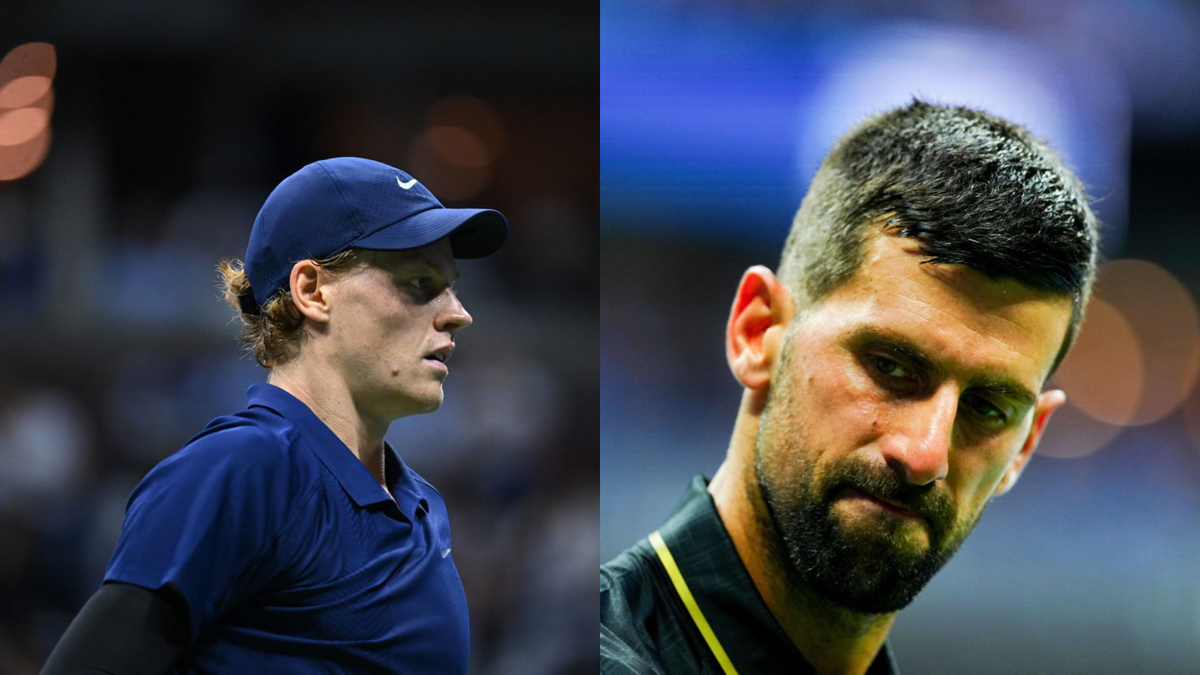
Imago
Image Credit: IMAGO

Imago
Image Credit: IMAGO
During a medical timeout at the Shanghai Masters, Holger Rune sat shirtless as the physio checked his blood sugar and vital signs, while ice towels were brought in to lower his body temperature. “You want a player to die on the court?” he asked the umpire. A heat policy exists, but it hasn’t stopped eight of the top 20 seeds, including world No. 2 and defending champion Jannik Sinner, from retiring mid-tournament. Those who remain on court continue to struggle: Novak Djokovic, usually the picture of endurance, was seen vomiting during matches under Shanghai’s sweltering heat and suffocating humidity. Now, after witnessing players’ struggles for days, the ATP has finally broken its silence on the punishing conditions.
Watch What’s Trending Now!
In a statement shared via email to Reuters, ATP said: “In parallel, the ATP Medical Services team implements several measures in cases of extreme heat, to help protect player health during competition.” The governing body, however, made it clear that it is open to further reforms. “This remains under active review and additional measures, including the implementation of an official heat policy, are currently being evaluated in consultation with players, tournaments, and medical experts,” the statement added. “Player safety remains a top priority for the ATP.”
The ATP’s current heat policy is quite underdeveloped compared to other tennis organizations. Unlike the WTA or Grand Slam tournaments, which have established formal heat stress protocols, such as the Australian Open’s five-point heat stress scale, the ATP relies on ad hoc decisions made by onsite supervisors in coordination with medical teams. But as we can see, this reactive approach has proven inadequate at the 2025 Shanghai Masters. Temperatures are around 30 degrees Celsius (86 degrees Fahrenheit), but it is the humidity during September and October, often reaching 75–80% that punishes the athletes most. Djokovic captured the severity of the conditions, stating:
ADVERTISEMENT
“It’s the same for every player out on the court, but it’s brutal. It’s brutal when you have over 80 per cent humidity day after day, particularly for the guys when they’re playing during the day with heat, with sun, it’s even more brutal.” The 24-time Grand Slam Champion vomited twice during his match with World number 150 Yannick Hanfmann to reach the Shanghai Masters last 16. Their third-round meeting lasted almost three hours, with Djokovic having to step away from the back of the court to throw up before he could return to the baseline again. Other players who retired due to illness or injury included Casper Ruud, Tomas Machac, David Goffin, Terrence Atmane, Hamad Medjedovic, and Wu Yibing, further speaking to the magnitude of the issue.
Beyond immediate medical interventions, players are calling for clearer thresholds for suspending play. Experts note that the combination of heat and humidity in Shanghai pushes the human body to its limits: core body temperatures can rise dangerously fast, dehydration sets in, and cramping becomes almost inevitable. An apt but unfortunate example here is Sinner, whose race to retain his Shanghai Masters title ended agonizingly on Sunday. The world number two was forced to retire mid-match against Tallon Griekspoor. The latter was leading the third-round clash 6-7(3) 7-5 3-2 when Sinner suffered cramp in his thigh, forcing him to exit after more than 2-1/2 hours on court.
In response to these incidents, the ATP has acknowledged the need for a more structured approach. The organization is actively reviewing its heat policy and is in discussions with players, tournaments, and medical experts to implement a formal heat policy. This policy would likely consider factors such as air temperature, humidity, and player health to determine when play should be suspended or adjusted. Meanwhile, female athletes face the same punishing conditions, making life on court increasingly miserable.
ADVERTISEMENT
Iga Swiatek addresses brutal schedule, forcing player retirements
During the China Open, when Iga Swiatek advanced into the R16 in Beijing, her victory came under a cloud. Her second-round opponent, Camila Osorio, retired abruptly after a medical timeout, sidelined by an injury. Swiatek didn’t hide her sympathy for the Colombian. “For sure, I’m sorry for Camila, because she’s always giving her 100%,” the Pole said, noting that Osorio had flagged her injury from the very start.
ADVERTISEMENT
When asked about the mounting fatigue affecting players like Carlos Alcaraz late in the season, Swiatek offered a candid perspective: “Obviously the season is long. The second part of it I think people are more fatigued. The Asian Swing is the hardest because you feel the finish line coming, but you still have to push.”
The Wuhan Open, meanwhile, delivered its own wave of medical chaos. Bianca Andreescu required a timeout before serving at 5-6 against Anastasia Zakharova, who herself had already received treatment earlier in the match. Katerina Siniakova halted play at 0-3 down in the second set against Yafan Wang. These incidents are far from isolated; they form a worrying pattern.
The suffocating heat, relentless travel, and grueling schedule are pushing athletes to their limits, forcing them to battle not just opponents, but their own bodies.
ADVERTISEMENT
With scheduling conflicts compounding extreme weather conditions, the Asian swing has become a test of endurance more than skill. The ATP has already raised its hand for reforms, and the WTA will soon have to follow.
It is time for the governing bodies to act decisively, protecting the players who sustain the beauty and drama of the sport.
The future of tennis demands it, as the game cannot thrive if its athletes are left gasping under the weight of its calendar.
ADVERTISEMENT
ADVERTISEMENT
ADVERTISEMENT
ADVERTISEMENT

